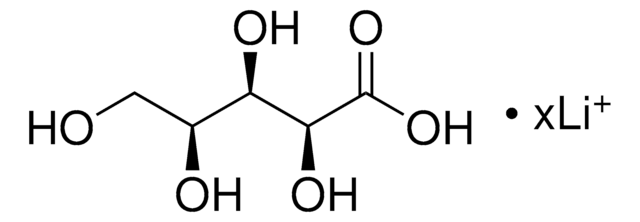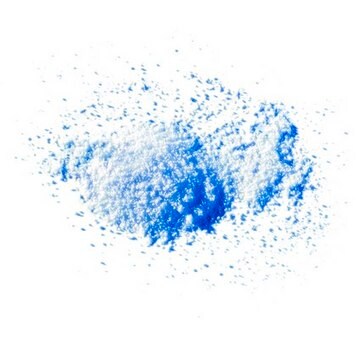11209
Ammonio cloruro
puriss., meets analytical specification of Ph. Eur., BP, USP, FCC, 99.5-100.5% (calc. to the dried substance)
Sinonimo/i:
Salmiac
About This Item
Prodotti consigliati
Densità del vapore
1.9 (vs air)
Tensione di vapore
1 mmHg ( 160.4 °C)
Grado
puriss.
Saggio
99.5-100.5% (calc. to the dried substance)
Stato
solid
Qualità
meets analytical specification of Ph. Eur., BP, USP, FCC
Impurezze
acidity or alkalinity, complies
residual solvents, complies
thiocyanate (SCN), complies
Residuo alla calcinazione
≤0.1% (as SO4)
Perdita
≤0.5% loss on drying, 105 °C
pH
4.6-6.0 (25 °C, 5%)
Punto di fusione
340 °C (subl.) (lit.)
Anioni in tracce
bromide (Br-): in accordance
iodide (I-): in accordance
sulfate (SO42-): ≤100 mg/kg
Cationi in tracce
As: ≤3 mg/kg
Ca: ≤100 mg/kg
Cu: ≤20 mg/kg
Fe: ≤20 mg/kg
Mg: ≤10 mg/kg
Pb: ≤4 mg/kg
Zn: ≤20 mg/kg
Compatibilità
complies for appearance of solution
Stringa SMILE
N.Cl
InChI
1S/ClH.H3N/h1H;1H3
NLXLAEXVIDQMFP-UHFFFAOYSA-N
Cerchi prodotti simili? Visita Guida al confronto tra prodotti
Categorie correlate
Avvertenze
Warning
Indicazioni di pericolo
Consigli di prudenza
Classi di pericolo
Acute Tox. 4 Oral - Eye Irrit. 2
Codice della classe di stoccaggio
13 - Non Combustible Solids
Classe di pericolosità dell'acqua (WGK)
WGK 1
Punto d’infiammabilità (°F)
Not applicable
Punto d’infiammabilità (°C)
Not applicable
Scegli una delle versioni più recenti:
Possiedi già questo prodotto?
I documenti relativi ai prodotti acquistati recentemente sono disponibili nell’Archivio dei documenti.
I clienti hanno visto anche
Il team dei nostri ricercatori vanta grande esperienza in tutte le aree della ricerca quali Life Science, scienza dei materiali, sintesi chimica, cromatografia, discipline analitiche, ecc..
Contatta l'Assistenza Tecnica.












